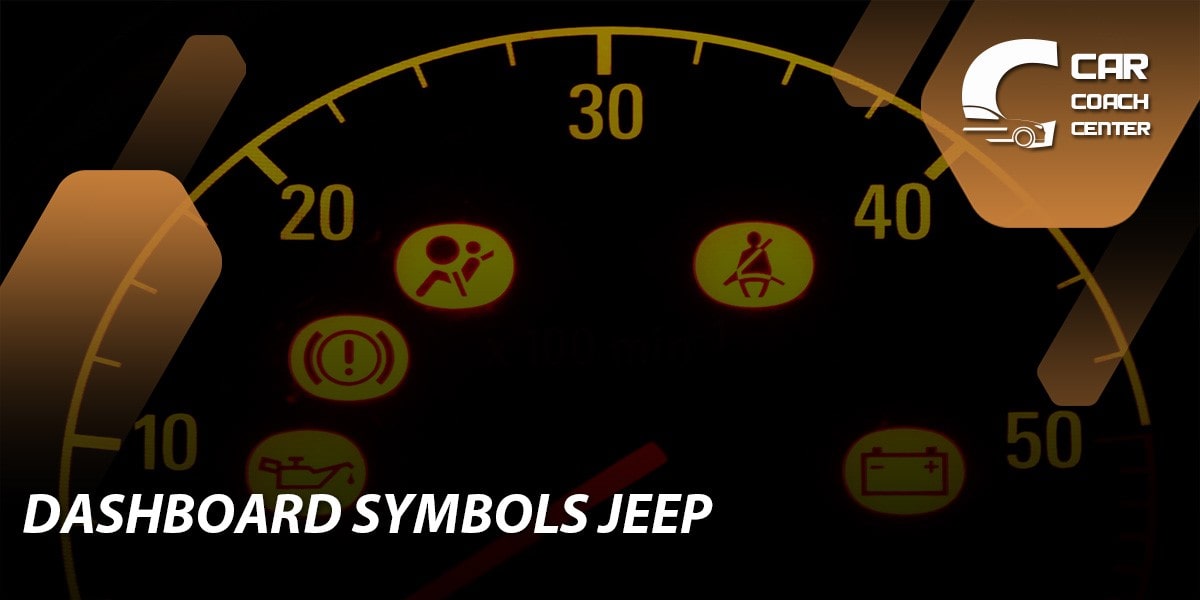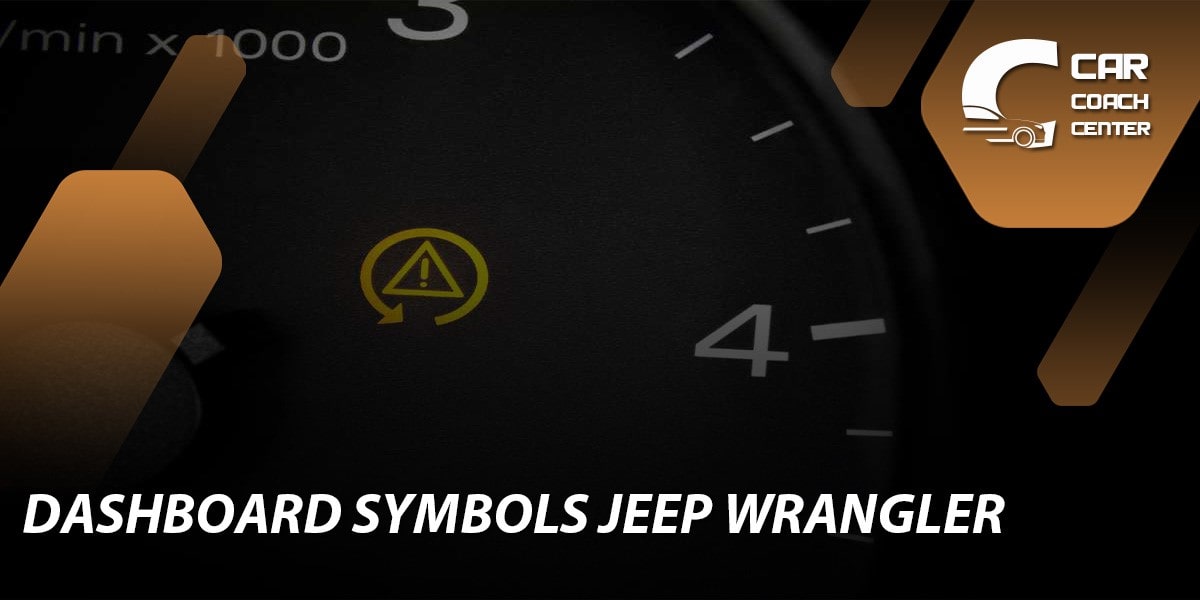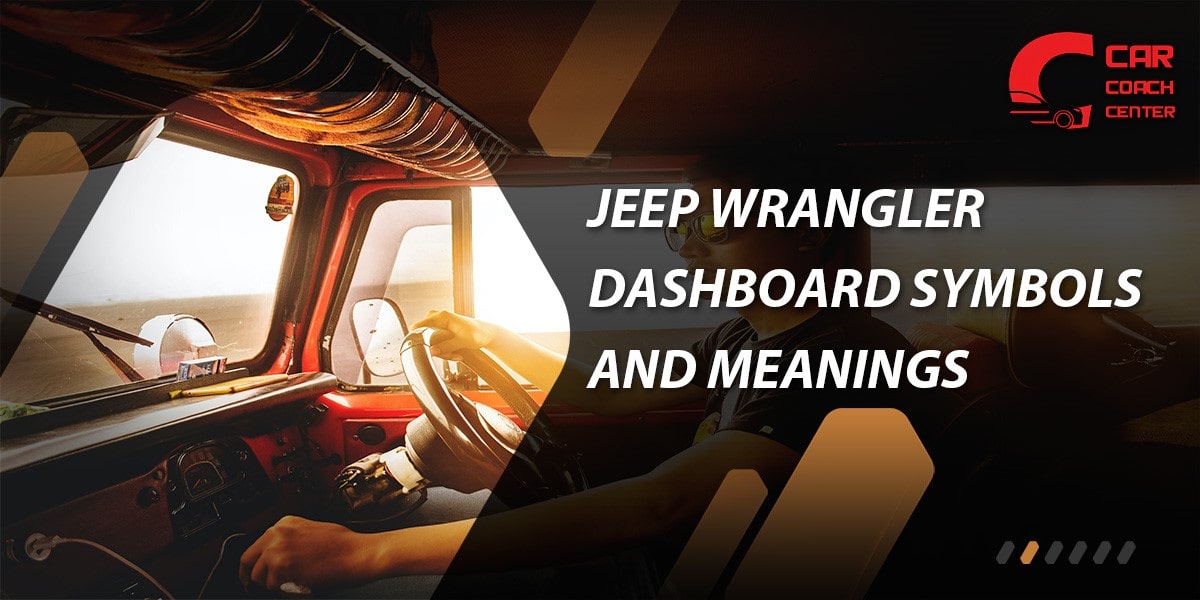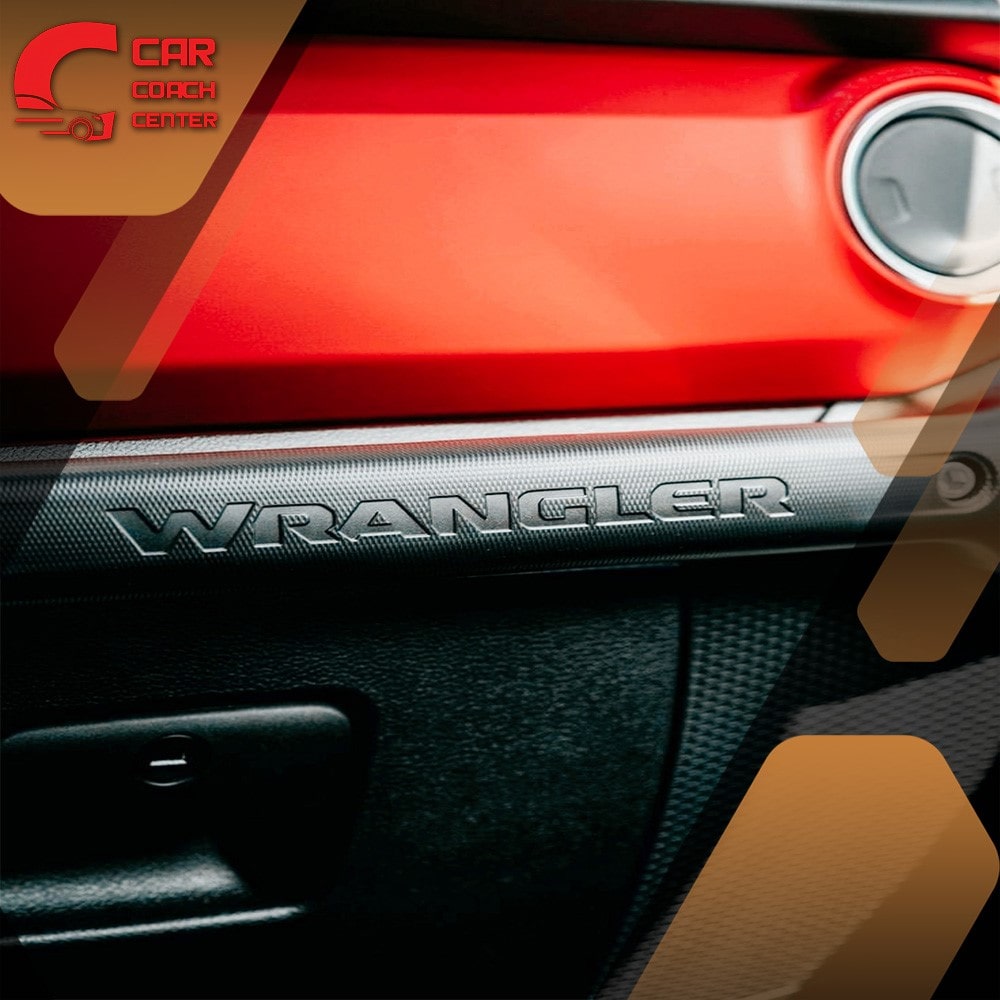Jeep Wrangler Dashboard Symbols and Meanings
Welcome to CarCouchCenter.com! If you’re a proud Jeep Wrangler owner, you know that this rugged and iconic vehicle is built for adventure and conquering the great outdoors. However, as you traverse through off-road trails or cruise along the city streets, your Jeep’s dashboard becomes your primary communication center.

It’s here that a myriad of symbols and indicators come to life, silently conveying vital information about your vehicle’s health and performance. For many drivers, these dashboard symbols can be as enigmatic as they are essential. Understanding their meanings is crucial not only for ensuring the longevity and reliability of your beloved Jeep but also for keeping you safe on your journeys.
In this comprehensive guide, “Jeep Wrangler Dashboard Symbols and Meanings,” we will delve into the mysterious world of dashboard icons, equipping you with the knowledge to decode and respond to them confidently. So, buckle up and get ready to unravel the secrets behind those fascinating symbols that adorn your Jeep Wrangler’s dashboard. Let’s embark on a journey of discovery together!
Decoding the Enigmatic: Unraveling the Top 10 Jeep Wrangler Dashboard Symbols
Engine Temperature Warning Icon
The engine temperature warning icon is one of the most crucial symbols on your Jeep Wrangler’s dashboard. This indicator resembles a thermometer submerged in water and illuminates when your engine runs hotter. Understanding the degrees of temperature this symbol represents is vital, as it can help prevent engine overheating and potential damage.
Battery Alert Symbol
The battery symbol, often in the shape of a rectangular box with a positive (+) and negative (-) sign, indicates an issue with your vehicle’s charging system. It warns you of a potential battery or alternator problem, and ignoring it could lead to a breakdown. Learn what to take when this icon lights up to avoid being stranded with a dead battery.
Oil Pressure Warning Light
The oil can icon on your dashboard points to a problem with your Jeep’s oil pressure. Low oil pressure can harm your engine’s health, so understanding the difference between a temporary dip in pressure and a critical issue is essential for maintaining your vehicle’s longevity.
Brake System Indicator
This symbol, often depicting an exclamation mark within a circle between two parentheses, is a clear sign that there might be an issue with your Jeep’s braking system. From low brake fluid levels to potential brake pad wear, knowing how to interpret this symbol could help you address brake-related problems before they compromise your safety.
Tire Pressure Monitoring System (TPMS) Light
The TPMS symbol looks like an exclamation mark inside a horseshoe shape and illuminates when there’s a change in tire pressure. Proper tire pressure is crucial for optimal performance and fuel efficiency, making it essential to understand how to respond when this symbol appears.
Check Engine Light
Arguably one of the most dreaded dashboard symbols, the check engine light appears when your Jeep’s onboard diagnostics system detects a potential issue. While it can indicate a range of problems, from minor to serious, paying attention to this warning and taking appropriate measures to diagnose and resolve the underlying issue is essential.
Airbag Warning Light
Safety should always be a priority, and the airbag warning light reminds you to ensure your vehicle’s airbag system is in working order. Familiarize yourself with the possible reasons for this symbol’s activation and take steps to keep your airbags functioning optimally.
Electronic Stability Control (ESC) Indicator
This symbol, typically depicting a car skidding, lights up when your Jeep’s electronic stability control system detects a loss of traction. Knowing how to respond when this symbol appears can enhance your vehicle’s stability, especially during challenging driving conditions.

Cruise Control Indicator
The cruise control symbol, usually representing a speedometer with an arrow pointing at a set speed, indicates when your Jeep’s cruise control system is engaged. Understanding its functions and when to use it can contribute to a more comfortable and fuel-efficient driving experience.
Fuel Level Indicator
Though seemingly straightforward, the fuel level symbol is a crucial reminder to adequately fill your tank. Being aware of your Jeep’s fuel consumption and reserve capacity can prevent the inconvenience of running out of gas unexpectedly.
Lights, Warnings, Action! Understanding the Critical Dashboard Symbols in Your Jeep Wrangler
As you embark on your Jeep Wrangler adventures, the dashboard becomes a vital communication hub, relaying important information about your vehicle’s health and performance. Understanding the critical dashboard symbols is essential for every Jeep owner, as they can help you respond promptly to potential issues, ensuring a safe and enjoyable driving experience. Let’s explore some of the most significant dashboard symbols and their meanings:
Engine Temperature Warning Icon
Represented by a thermometer submerged in water, the engine temperature warning light indicates that your engine is running hotter than normal. If this symbol illuminates, pulling over safely and letting your engine cool down is crucial. Driving with an overheated engine can cause severe damage and lead to costly repairs.
Battery Alert Symbol
When you see a rectangular box with a positive (+) and negative (-) sign, it means there’s an issue with your vehicle’s charging system. It could be a failing battery or a problem with the alternator. Ignoring this warning can result in a dead battery and leave you stranded.
Oil Pressure Warning Light
The oil can icon alerts you to low oil pressure in your Jeep’s engine. Insufficient oil pressure can lead to engine damage, so it’s essential to stop driving and check your oil levels immediately when this light comes on.
Brake System Indicator
Depicted by an exclamation mark within a circle between two parentheses, this symbol warns of potential problems with your brake system. It could indicate low brake fluid, worn brake pads, or other issues. Addressing brake problems promptly is vital for your safety on the road.
Tire Pressure Monitoring System (TPMS) Light
The TPMS symbol, often an exclamation mark inside a horseshoe shape, illuminates when there’s a change in tire pressure. Proper tire inflation is crucial for optimal handling and fuel efficiency, so check your tire pressure and add air as needed.
Check Engine Light
Arguably the most dreaded dashboard symbol, the check engine light indicates that your Jeep’s onboard diagnostics system has detected a potential issue. It can range from something as simple as a loose gas cap to more complex engine problems. When this light comes on, it’s best to diagnose your Jeep by a qualified mechanic.
Airbag Warning Light
Safety is paramount, and the airbag warning light reminds you to ensure your vehicle’s airbag system is functional. If this light stays on or flashes, inspect your Jeep immediately to address any airbag-related issues.

Electronic Stability Control (ESC) Indicator
The ESC symbol, often depicting a car skidding, lights up when your Jeep’s stability control system senses a loss of traction. Properly functioning ESC is crucial for maintaining control during challenging driving conditions.
Cruise Control Indicator
The cruise control symbol, usually a speedometer with an arrow pointing at a set speed, illuminates when your Jeep’s cruise control is engaged. Familiarize yourself with your vehicle’s cruise control system to utilize it effectively on long drives.
Fuel Level Indicator
The fuel level symbol may seem straightforward, but keeping an eye on your gas tank is essential. Running out of fuel can leave you stranded, especially in remote areas, so refill your tank when it approaches a low level.
When the Icons Speak: A Closer Look at Jeep Wrangler Dashboard Symbols and Their Messages
Your Jeep Wrangler’s dashboard is adorned with various symbols, each communicating essential messages about your vehicle’s condition and performance. As a responsible Jeep owner, understanding these dashboard symbols is crucial for maintaining the health of your vehicle and ensuring a safe driving experience. Let’s take a closer look at some of the most common Jeep Wrangler dashboard symbols and the messages they convey:
Engine Temperature Warning Icon
This symbol, resembling a thermometer submerged in water, signals the engine’s temperature. If the icon illuminates, the engine is running hotter than normal. This could be due to low coolant levels, a faulty thermostat, or a cooling system issue. Prompt action is necessary to prevent engine overheating and potential damage.
Battery Alert Symbol
Represented by a rectangular box with positive (+) and negative (-) signs, this symbol indicates a problem with the vehicle’s charging system. It could be due to a weak battery, a faulty alternator, or a loose connection. Addressing this issue promptly is essential to avoid battery failure and unexpected breakdowns.
Oil Pressure Warning Light
Depicted by an oil can icon, this warning light indicates low oil pressure in the engine. Low oil pressure can lead to engine damage, so it’s vital to stop the vehicle immediately and check the oil level. Continued driving with low oil pressure can cause severe engine problems.
Brake System Indicator
When you see an exclamation mark inside a circle between two parentheses, it signals potential issues with the brake system. This could be caused by low brake fluid, worn brake pads, or a brake system malfunction. Promptly addressing brake problems ensures optimal braking performance and enhances safety.

Tire Pressure Monitoring System (TPMS) Light
The TPMS symbol, often an exclamation mark within a horseshoe shape, illuminates when tire pressure is low. Correct tire pressure is essential for traction, handling, and fuel efficiency. Regularly check your tire pressure and address any abnormalities promptly.
Check Engine Light
One of the most dreaded symbols, the check engine light illuminates when the onboard diagnostics system detects a potential issue. It could signify various problems, ranging from minor to severe. When this light comes on, it’s crucial to have your Jeep diagnosed by a qualified mechanic to prevent further damage.
Airbag Warning Light
Safety is paramount, and the airbag warning light reminds you to ensure your vehicle’s airbag system is functional. If the light remains illuminated or flashes, it indicates a potential problem with the airbag system. Immediate inspection and repair are necessary to ensure the airbags deploy correctly in case of an accident.
Electronic Stability Control (ESC) Indicator
Represented by a car skidding icon, the ESC symbol lights up when the stability control system senses a loss of traction. Proper functioning of the ESC system is essential for maintaining vehicle stability, especially during slippery road conditions.
Cruise Control Indicator
The cruise control symbol, usually a speedometer with an arrow pointing at a set speed, illuminates when the cruise control system is engaged. Familiarize yourself with the cruise control features to use them effectively during highway driving.
Fuel Level Indicator
The fuel level symbol is a simple reminder to monitor your gas tank. Running out of fuel can leave you stranded, especially in remote areas. Always refill your tank before it reaches a critically low level.
From Adventure to Caution: Exploring the Spectrum of Jeep Wrangler Indicator Symbols
Owning a Jeep Wrangler is an invitation to adventure, allowing you to conquer challenging terrains and explore the great outdoors. As you embark on your journeys, your Jeep’s dashboard becomes an essential communication center, relaying information through a spectrum of indicator symbols. Let’s explore this diverse range of symbols, from those representing your adventurous spirit to those urging caution:
4WD Indicator
As a true off-road champion, the Jeep Wrangler boasts a 4WD (Four-Wheel Drive) system that enhances traction and handling on rugged terrain. The 4WD indicator symbol, often represented by “4WD” or “4×4,” lights up when you engage in this feature, signaling your readiness for adventure and off-road challenges.
Hill Descent Control (HDC) Symbol
When descending steep hills, the HDC system helps maintain a controlled speed, providing confidence and stability. This symbol, often depicting a vehicle going downhill, illuminates when the HDC system is active, making your off-road escapades safer and more enjoyable.
Fog Light Indicator
As you navigate through low visibility conditions, the fog light symbol, typically represented by a lamp emitting horizontal lines, illuminates when you activate the front fog lights. These lights are designed to cut through fog, rain, or snow, ensuring you stay on the right path during adverse weather.
Low Fuel Warning Light
While adventure fuels the soul, the low fuel warning light serves as a reminder to fuel up before continuing your journey. This symbol, usually resembling a gas pump, urges you to exercise caution and avoid running out of fuel in remote areas.
Traction Control System (TCS) Light
The TCS symbol, often depicted as a vehicle with wavy lines underneath, illuminates when the traction control system engages. This system prevents wheel slippage during acceleration, keeping you in control and enhancing safety during thrilling drives.

Seat Belt Reminder
A simple yet crucial symbol reminds you to buckle up before you set out on your adventures. The seat belt reminder, often represented by a figure wearing a seat belt, emphasizes the importance of safety and responsible driving.
High Beam Indicator
As you traverse dark and unfamiliar paths, the high beam indicator, usually shown as a lamp with horizontal lines extending upward, signals that your high beams are engaged. This symbol is a courteous reminder to dim your headlights when approaching other vehicles to maintain clear visibility for all drivers.
Electronic Sway Bar Disconnect (eSway) Symbol
For added agility during off-road pursuits, the Jeep Wrangler’s Rubicon trim features an electronic sway bar disconnect system. This symbol, often represented by a vehicle with curved arrows, illuminates when you activate the eSway system, allowing for improved wheel articulation and enhanced maneuverability on uneven terrain.
Conclusion
In conclusion, understanding the diverse array of Jeep Wrangler dashboard symbols is the key to becoming a knowledgeable and confident driver. Each symbol conveys essential messages about your vehicle’s health and performance, from adventure-ready indicators like 4WD and HDC to cautionary warning lights such as the check engine and brake system indicators.
By familiarizing ourselves with these symbols, reacting promptly to warning lights, and prioritizing regular maintenance, we can navigate our Jeep Wrangler journeys with expertise and safety in mind. As passionate Jeep enthusiasts, let’s embrace the language of our vehicles, responding to dashboard symbols like seasoned pros.
For expert insights and information on maintaining your beloved Jeep Wrangler, visit CarCouchCenter.com. Here, we can continue expanding our knowledge and embark on countless unforgettable adventures, masterfully communicating with our Jeeps at every step. Happy driving!
What does the check engine light in my Jeep Wrangler indicate?
The check engine light signals potential issues with your vehicle's onboard diagnostics system, ranging from minor to more significant problems.
Why is the battery alert symbol lighting up on my dashboard?
The battery alert symbol indicates a problem with your Jeep's charging system, which could be caused by a weak battery, faulty alternator, or loose connection.
What should I do if the oil pressure warning light comes on?
The oil pressure warning light indicates low oil pressure. Stop your vehicle immediately and check the oil level, as continued driving could lead to engine damage.


